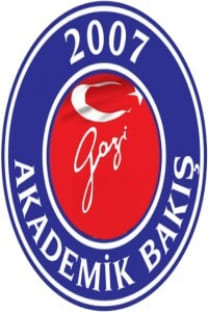Soğuk Savaş Sonrası Dönemin Uluslararası Sisteminin Yapısına İlişkin Görüşler Üzerine Bir Eleştiri
ABD, Uluslararası Sistem, Rusya, Çin, Çok Kutupluluk.
A Critique on the Concerns About Structure of International System After the Cold War Era
USA, International System, Russia, China, Multipolarity. ,
___
- ‘Remaking America’, Commonweal, 13 Şubat 2009.
- “Barack Obama’s ambitious budget is unveiled”, Economist, 26 Şubat 2009.
- “Hillary Clinton tours Asia. What sort of secretary of state will she prove to be?”, Eco- nomist, 17 Şubat 2009.
- “Hillary says hello to Asia”, Economist, 21 Şubat 2009; “America needs to show more patience – and more delicacy – on both sides of the Afghan – Pakistani bor- der”, Economist, 19 Şubat 2009.
- ABD Ulusal İstihbarat Konseyi, “Mapping the Global Justice”, NIC 2004 – 3, Aralık 2004, , www.cia.gov/nic, s. 47 – 64.
- ABD Ulusal İstihbarat Konseyi, Global Trends 2025: A Transformed World, ABD, Kasım 2008, s. 28 – 37, 80 – 99.
- JAFFE Amy Myers ve diğerleri, “Russia Back to the Future?”, Testimony before the United States Senate Committee on Foreign Relations, Haziran 2006.
- POSEN Barry R., “ESDP and the Structure of World Power”, The International Spectator, Sayı 1, 2004, s. 8.
- GILL, Bates “Contrasting Visions: United States, China and World Order”, Remarks pre- sented before the US-China Security Review Commission Session on US-China Relationship and Strategic Perceptions, 3 Ağustos 2001, s. 10 – 18.
- RUSSETT Bruce ve diğerleri, World Politics: The Menu for Choice, Boston, St. Martin’s, 1992, s. 68 – 70; 72 – 78.
- Christopher Layne, “The Unipolar Illusion Revisited, The Coming End of the United Sta- tes’ Unipolar Moment”, International Security, Cilt 31, Sayı 2, Kış 2006, s.7 – 41.
- LEGGEWIE Claus, “The Worried Friend or Hegemony vs. Globalization”, Working Paper PRI-2, 8 Kasım 2002, www.berkeley.edu/pubs/workingpapers/PRI-2-W.
- GOMPERT David, “Right Makes Might: Freedom and Power in the Information Age”, McNair Paper 59, Mayıs 1998, http://www.ndu.edu/inss/mcnair/mcnair.html.
- LAMPTON David M., “What Growing Chinese Power Means for America”, testimony pre- pared for US Senate Committee on Foreign Relations, hearing on “The Emergence of China Throughout Asia: Security and economic Consequences for the US”, The East Asian and Pacific Affairs Subcommittee, 7 Haziran 2005, s. 2 – 3.
- WILKINSON David, “Unipolarity without hegemony”, International Studies Review, Cilt 1, Sayı 2, 1999, s. 141.
- KRAHMANN Elke, “American Hegemony or Global Governance? Competing Visions of International Security”, International Studies Review, Sayı 7, 2005.
- German Development Institute, “Unstable Multipolarity? China’s and India’s Challen- ges for Global Governance”, briefing paper, 1/2006, s. 2 – 3.
- BINNENDIJK Hans, “Back to Bipolarity”, The Washington Quarterly, Cilt 22, Sayı 4, Güz 1999, s. 7 – 14.
- BULL Hedley, The Anarchical Society: A Study of Order in World Politics, Londra, Macmillan, 1995.
- http://www.whitehouse.gov/agenda/foreign_policy/ (Erişim Tarihi: 20 Mart 2009).
- IKENBERRY John G., “Strategic Reactions to American Preeminence: Great Power Po- litics in the Age of Unipolarity”, National Intelligence Council, 28 Temmuz 2003, www.dni.gov/nic/confreports_strareact.html (Erişim Tarihi: 25.04.2007).
- ROURKE John – Mark A. Boyer, International Politics on the World Stage, Guilford, Brown ve Banchmark Yayıncılık, 2004, s. 60 – 66.
- ADAMS Karen Ruth, “New Great Powers: Who Will They Be, and How Will They Rise?”, Uluslararası Çalışmalar Derneği’nin 2005 yılında gerçekleştirdiği yıllık toplan- tısında sunulan bildiri, ABD, Hawai, 2 – 5 Mart 2005.
- VIOTTI Paul R. ve KAUPPI Mark V., International Relations Theory: Realism, Pluralism and Globalism, ABD, Allyn & Bacon, 1993, s. 228 – 449.
- NESS Peter Van, “Hegemony, not anarchy: why China and Japan are not balancing US unipolar power”, International Relations of the Asia-Pacific, Cilt 2, 2002, s. 133 – 134.
- PINR, “China’s Geostrategy: Playing a Waiting Game”, 7 January 2005, www.pinr.com/re- port.php?ac=view_printable&report_id=253&language_id=1, (25 Nisan 2007).
- PINR, “Testing the Currents of Multipolarity”, 15 Aralık 2004, http://www.pinr.com/re- port.php?ac=view_report&report_id=246&language_id=1.
- DELLIOS Rosita, “The Rise of China as a Global Power”, The Culture Mandala, Cilt 6, Sayı 2, www.international_relations.com/CM6-2WB/GlobalChinaWB.htm (24.04.2007).
- RYNNING Sten, “NATO’s Enduring Challenge: Matching American Primacy and Euro- pean Ambitions”, UNISCI Discussion Papers, Sayı 9, Ekim 2005, www.ucm.es/info/ unisci/UNISCI9Rynning.pdf
- VOLGY Thomas J. – Alison Bailin, International Politics and State Strength, Boulder, Lynne Rienner, 2003.
- JONES Walter S., The Logic of International Relations, New York, Longman, 1997, s. 5.
- WOOHLFORTWilliam C. h, “The Stability of Unipolar World”, International Security, Cilt 24, Sayı 1, 1999, s. 5 – 41.
- OVERHOLT William H., “China and Globalization”, CT 244, Testimony presented to the US-China Economic and Security Review Commission, 19 Mayıs 2005, s. 2.
- XINBO Wu, “The Promise and Limitations of a Sino – US Partnership”, The Washington Quarterly, Güz 2004, s. 115 – 126.
- QUANSHENG Zhao, “Changing Regional Economic and Security Framework in East Asia”, Korea Review of International Studies, www.koreagsis.ac.kr/research/journal/ vol7/7-06-Qunsheng%20Zhao.pdf,s.81.
- ISSN: 1307-9778
- Yayın Aralığı: 2
- Başlangıç: 2007
- Yayıncı: Hale Şıvgın
Ulusal Tarih Eğitiminin Kimlik Gelişimindeki Önemi
Çivi Yazılı Tabletlere Göre Eski Anadolu’da Vergi Uygulamaları Ve Kaçakçılık (M.Ö. ± 1975-1750)
Çivi yazılı tabletlere göre eski Anadolu'da vergi uygulamaları ve kaçakçılık (M.Ö. $pm$ 1975-1750)
Ermenistan Saldırganlığı Karşısında Birleşmiş Milletler’in Tutumu
Kayseri Şer’iyye Sicillerindeki Örneklere Göre Osmanlı Dokuma İmalatçılığında Ön Sanayileşme
Şikago Üniversitesi Şarkiyat Enstitüsü’nde Muhafaza Edilen Eyyûbi ve Memluk Sikkeleri
Utanç Verici Bir Eylem: Ermeni Soykırımı ve Türk Sorumluluğu Meselesi
Soğuk Savaş Sonrası Dönemin Uluslararası Sisteminin Yapısına İlişkin Görüşler Üzerine Bir Eleştiri
